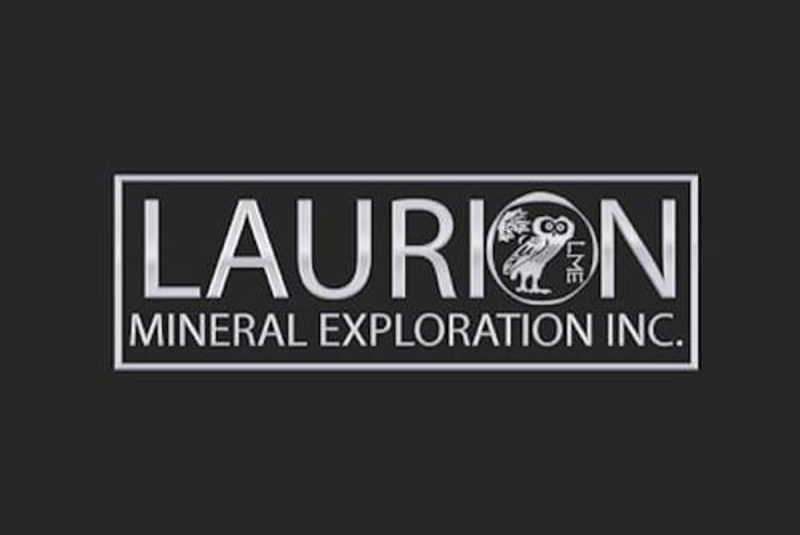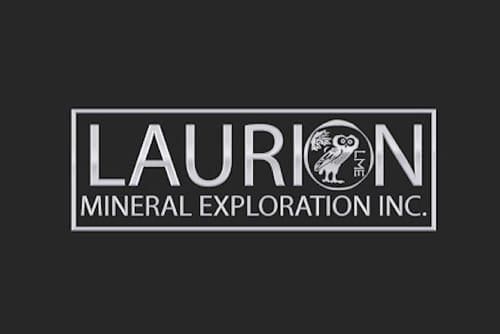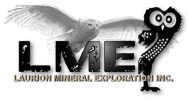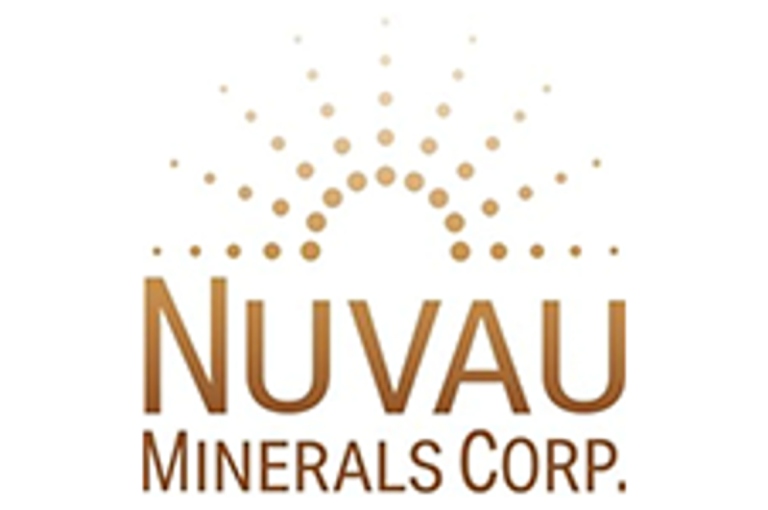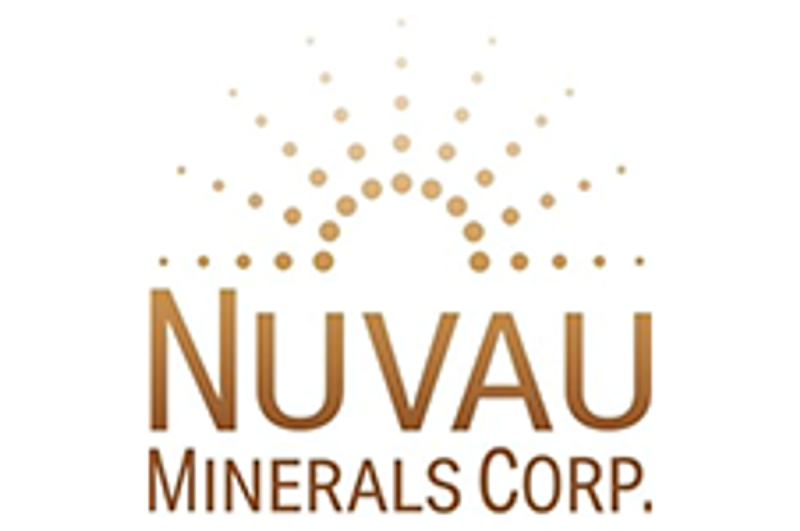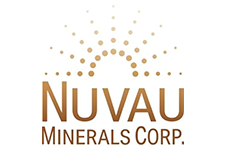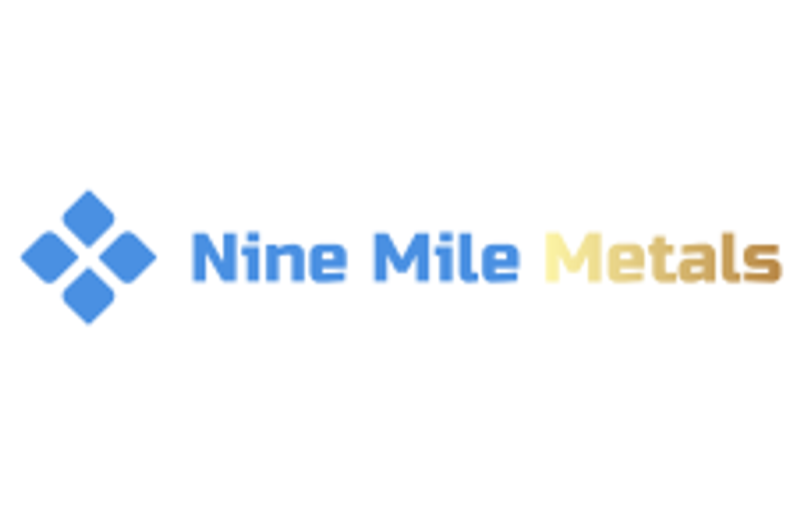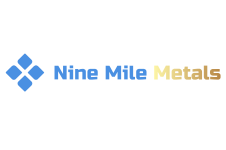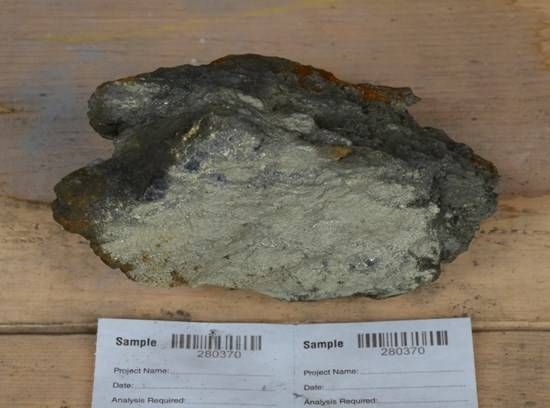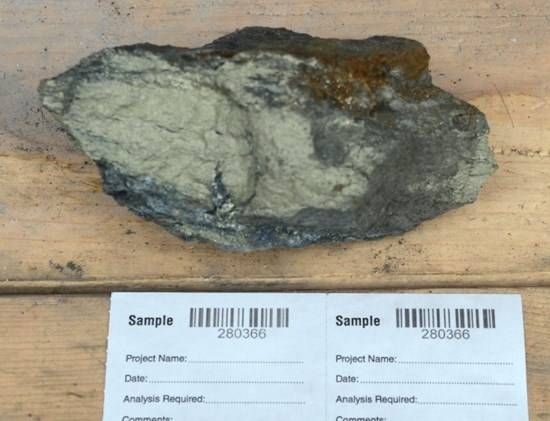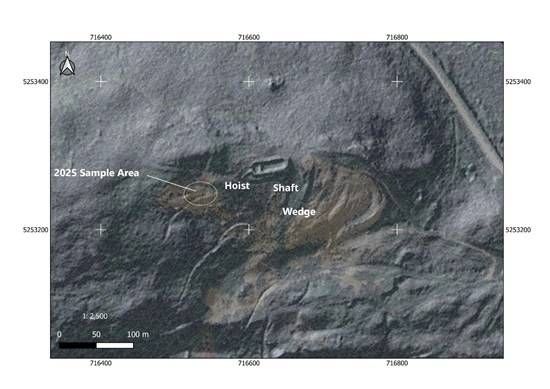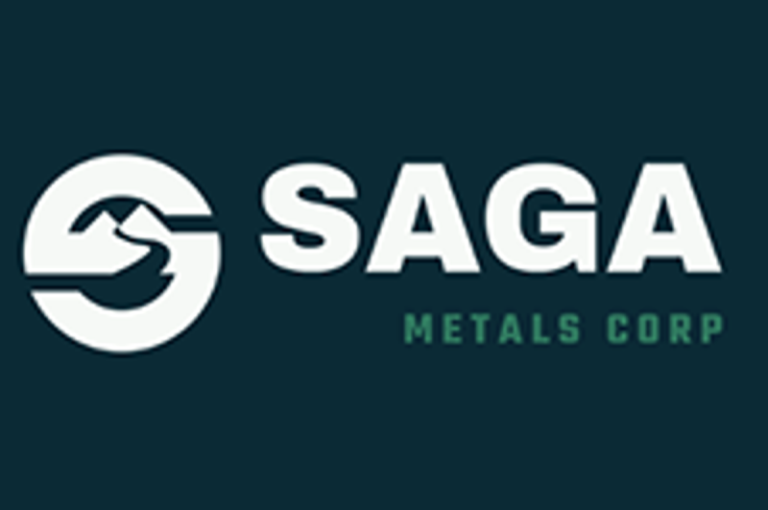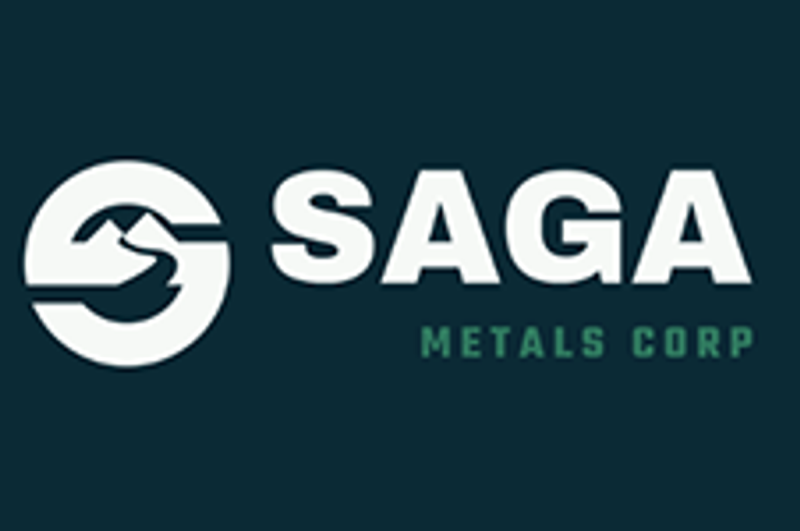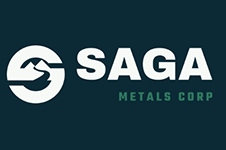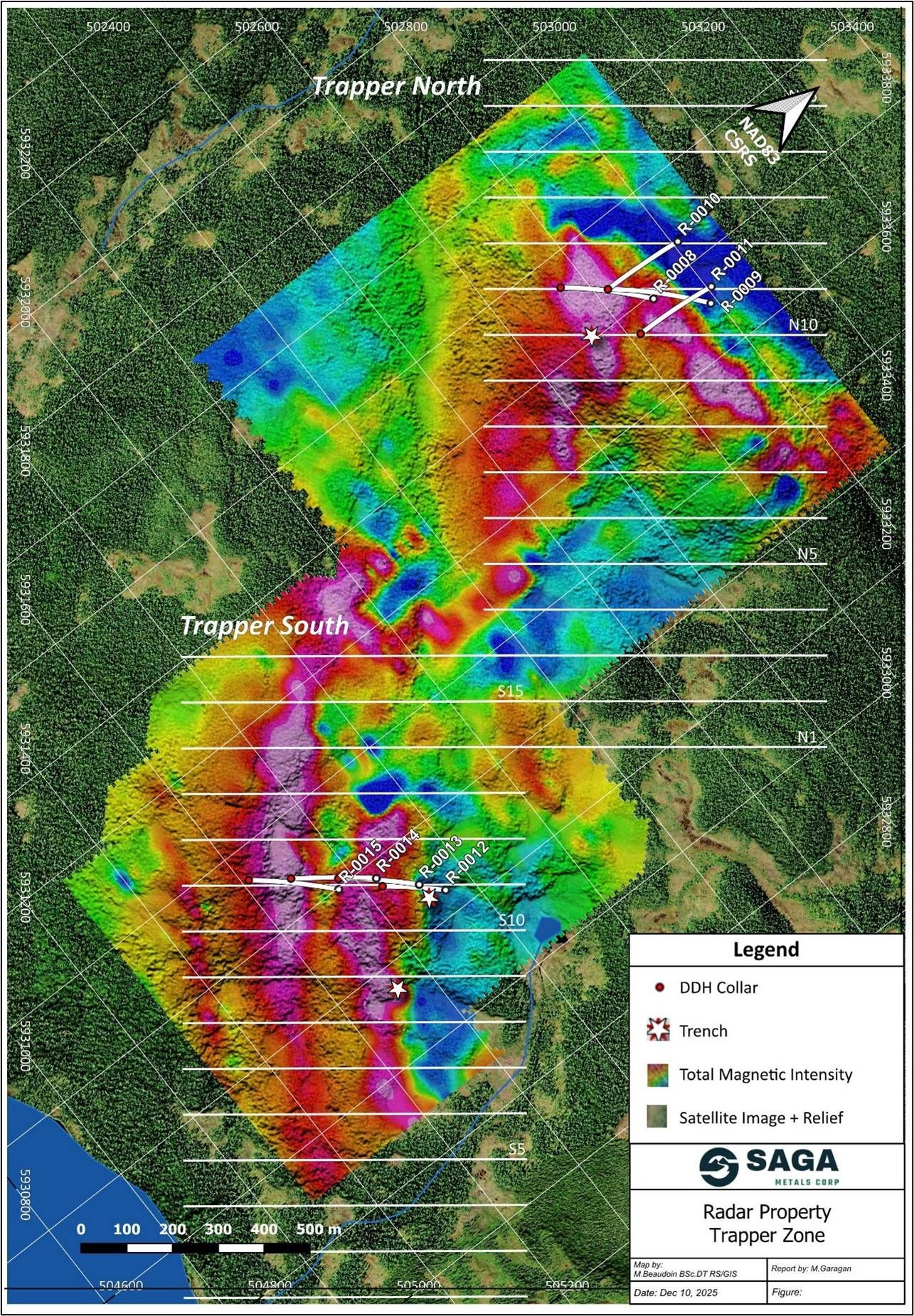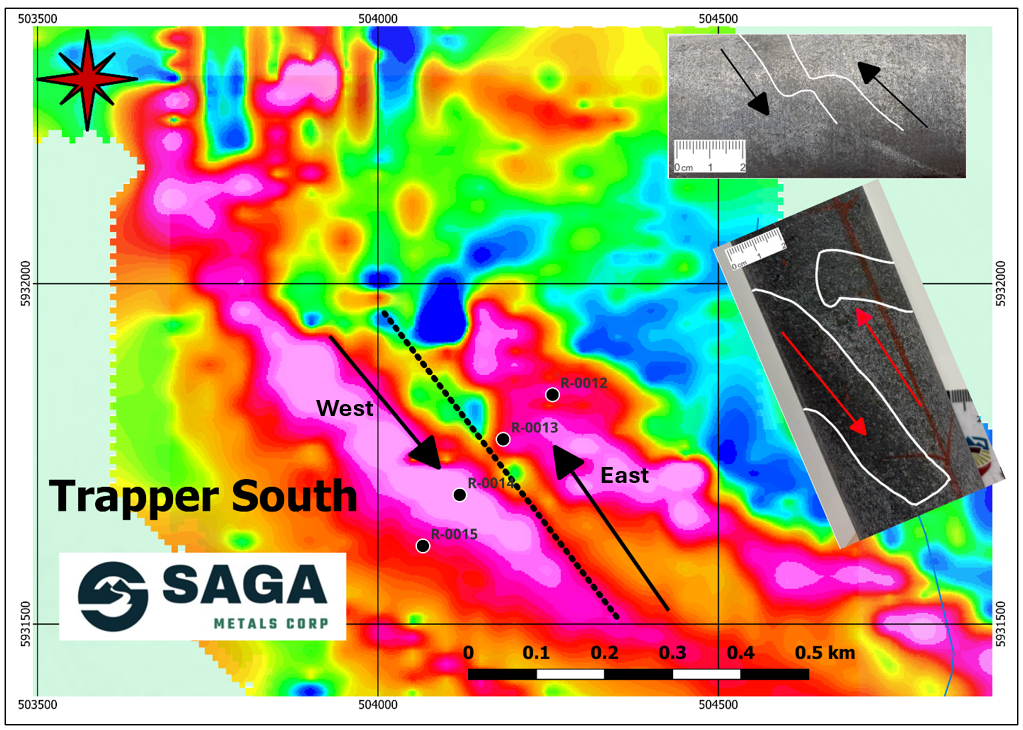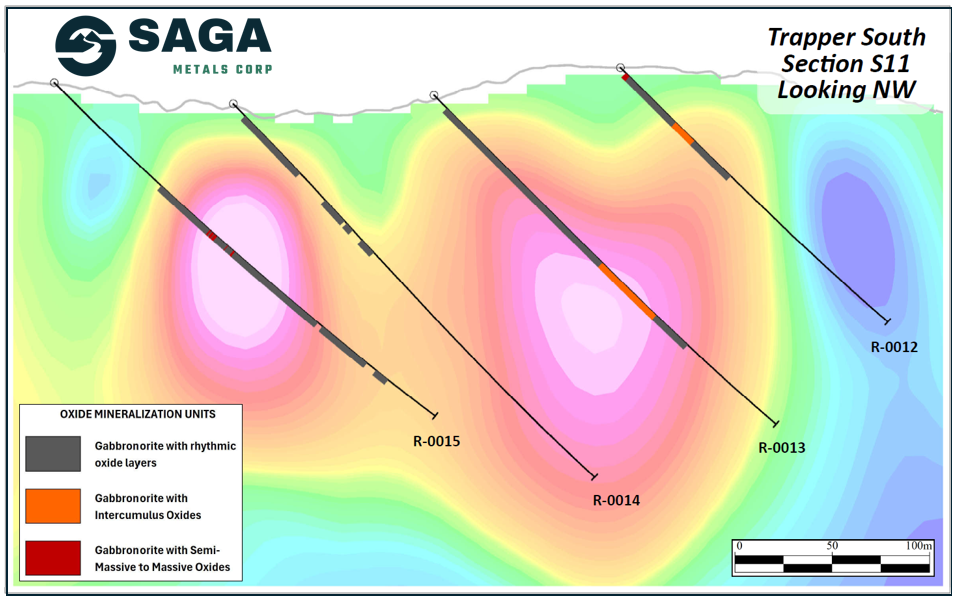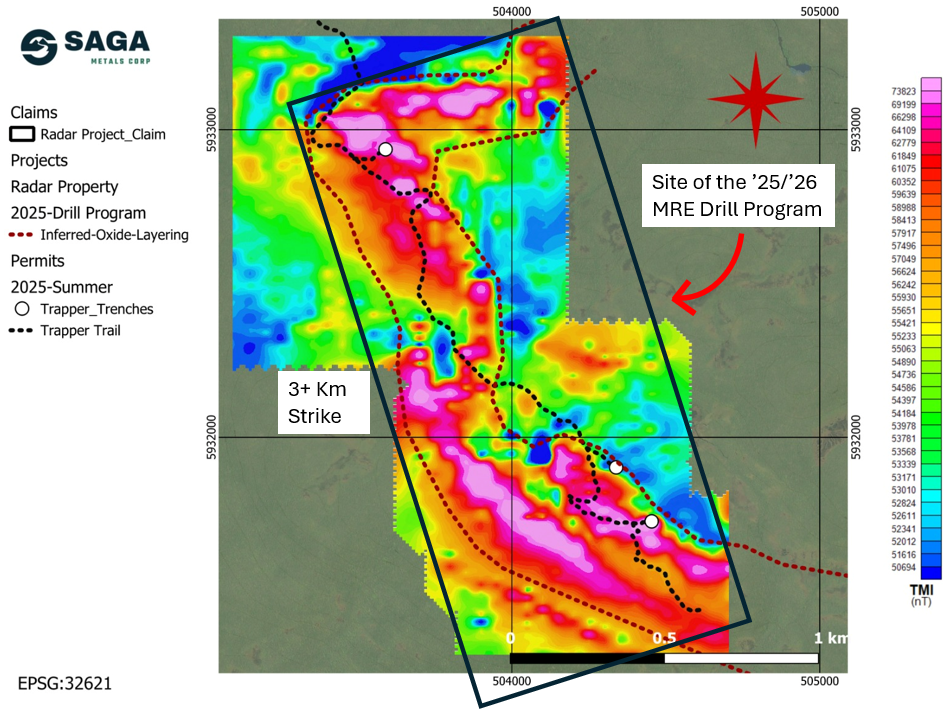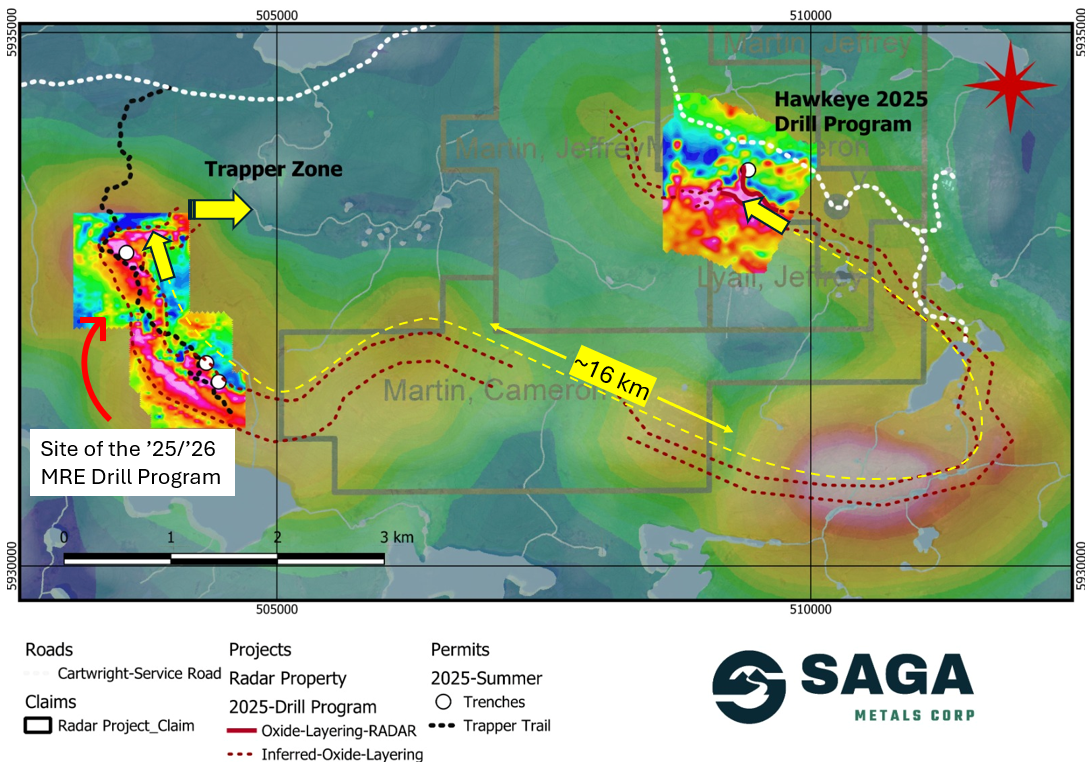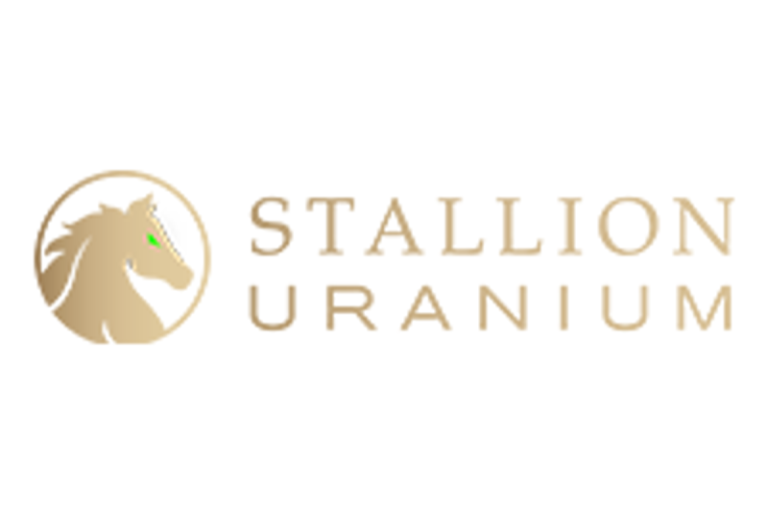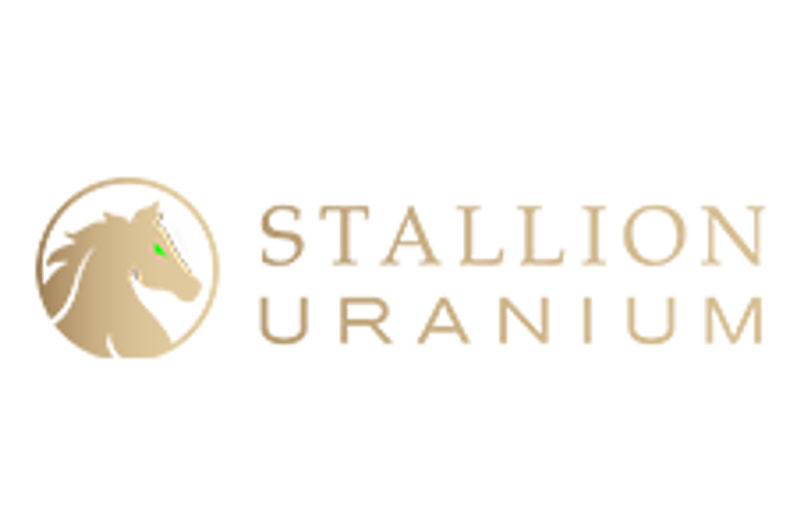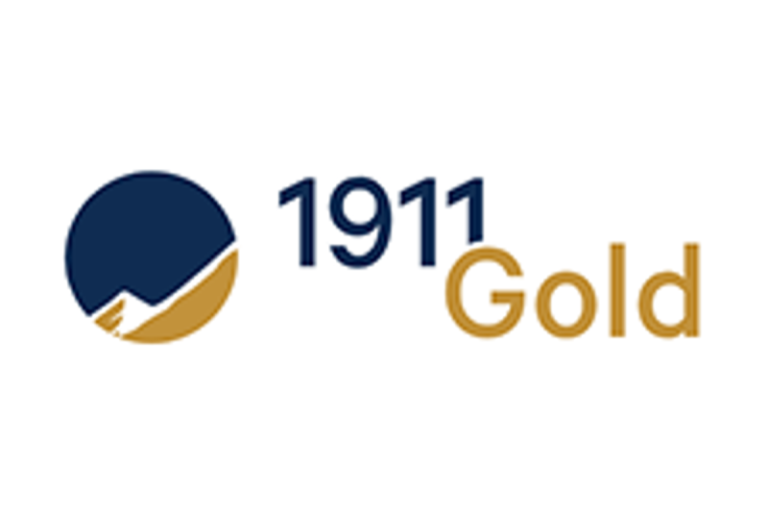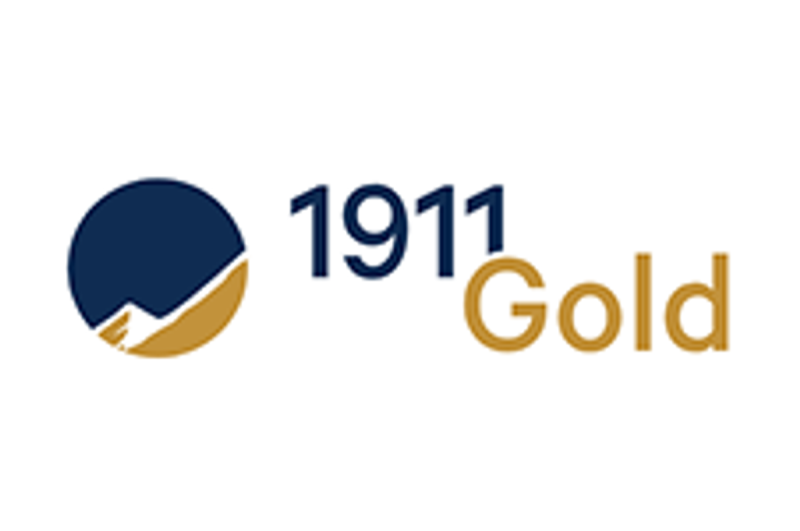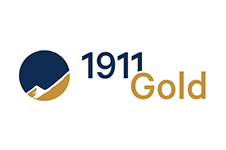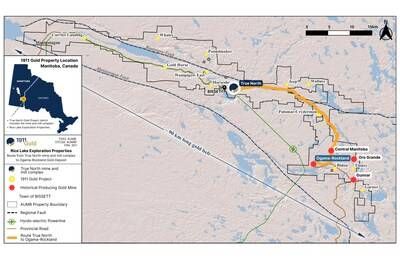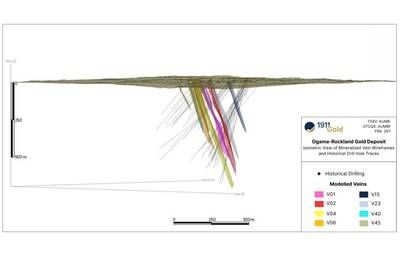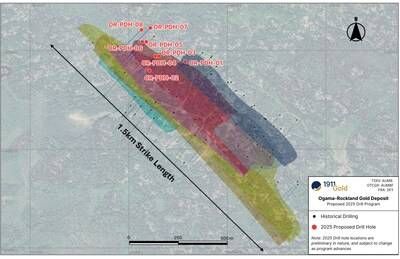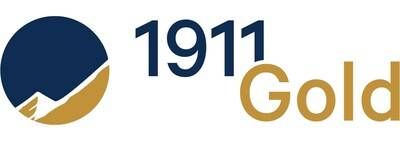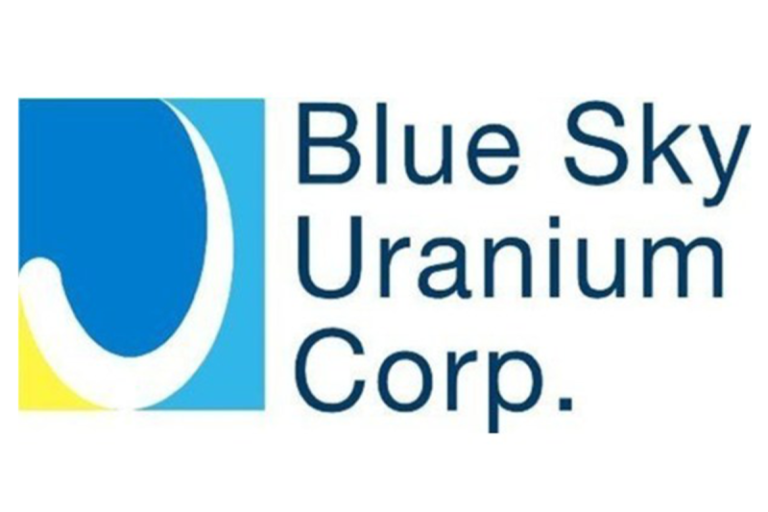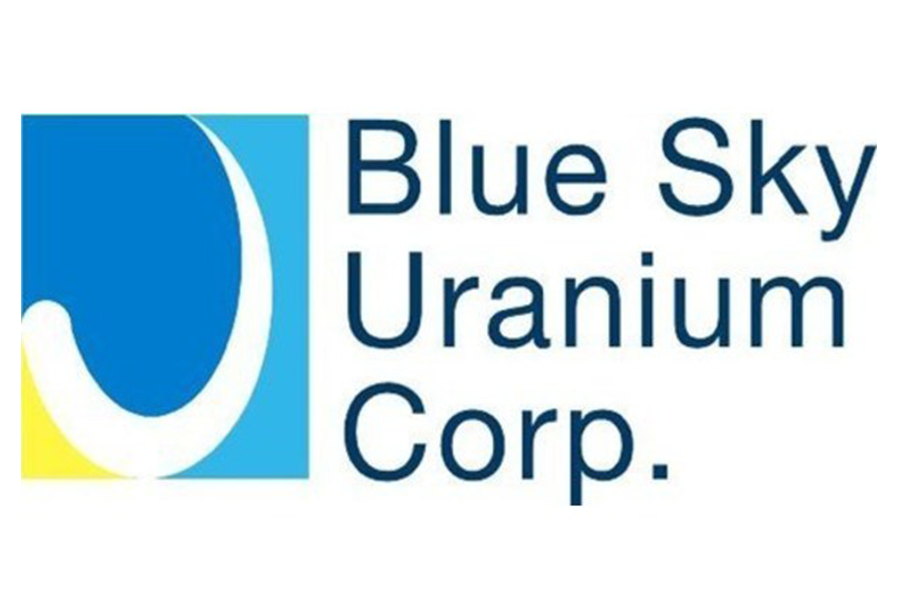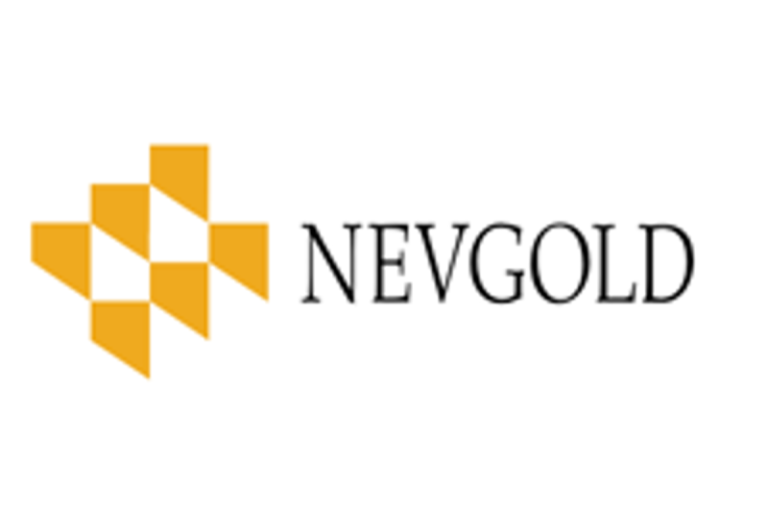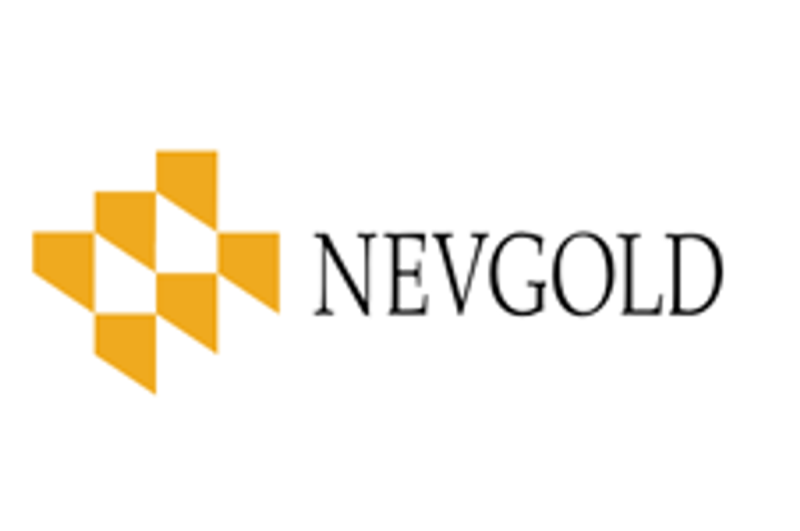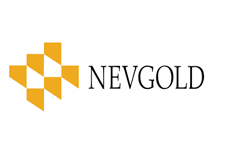Nevgold Corp. (‘NevGold’ or the ‘Company’) (TSXV:NAU,OTC:NAUFF) (OTCQX:NAUFF) (Frankfurt:5E50) is pleased to announce that is has staked an additional 90 claims, approximately 6 square kilometers or 1500 acres, with strong antimony-gold prospectivity at its Limousine Butte Project (the ‘Project’, ‘Limo Butte’) in Nevada. The newly staked ground has the same geological signatures as other antimony-gold targets at the Project.
Aerial Drone Footage of 2025 Drilling & High-Grade Antimony Bullet Zone Discovery (Click Here):
Key Highlights
- Added an additional 90 claims, approximately 6 square kilometers or 1500 acres, with strong antimony-gold prospectivity
-
- The new claims encompass remaining surface exposure of a dolomite-over-Pilot Shale thrust block, as well as exposed Pilot Shale on both the west and east of the dolomite thrust; this geological setting is where the 2025 Bullet Zone drilling discovered significant antimony and gold mineralization (See News Release dated December 2, 2025).
- Exposed outcrop in the new ground has a strong surface expression of gold and antimony mineralization, with rock chips in Pilot Shale up to 1.23 g/t Au and 0.49% Sb, and rock chips in the dolomite thrust up to 8.74 g/t Au and 0.67% Sb.
-
- 8.74 g/t Au
- 0.36% Sb and 0.10 g/t Au
- 0.24% Sb and 0.42 g/t Au
- 0.67% Sb*
- 0.49% Sb*
- 0.42% Sb*
- 0.33% Sb and 0.41 g/t Au*
- 0.10 % Sb and 1.07 g/t Au*
- 0.36% Sb*
- 1.23 g/t Au*
- 0.76 g/t Au*
- 30 holes have been completed in the current 2025-2026 drill program with assays pending
- The Company has completed Phase 1 antimony-gold sampling of the Crushed and Run of Mine (‘ROM’) leach pads from the past-producing Golden Butte pit, which produced over 100,000 ounces of gold in 1989-1990
-
- The historic leach pads have material at surface that was previously mined and crushed with strong antimony-gold potential (see Figure 3); the previous Golden Butte operation was solely focused on gold with no focus on antimony
- Phase I sampling results will be released over the coming weeks
- Antimony is one of the highest priority Critical Minerals due to its strategic importance and military applications; Limo Butte is a brownfield mine site located in the State of Nevada with near-surface, high-grade antimony mineralization
Limo Butte Planned 2025-2026 Activities / Status Update
NevGold will continue its active exploration program at Limo Butte including:
- Evaluating the historical geological database with focus on gold and antimony (completed);
- Advancing metallurgical testwork (Phase II completed);
- Continuing to drill test gold-antimony targets (ongoing, 30 drillholes completed)
- Sampling the Crushed and ROM leach pads from the past-producing Golden Butte pit to determine the antimony-gold mineralization (Phase I sampling completed, results in the coming weeks);
- Completing initial gold-antimony Mineral Resource Estimate (MRE) (in progress).
Other 2025-2026 Project Updates
Nutmeg Mountain Gold Project (Idaho)
- 2025 Mineral Resource Estimate (‘MRE’) completed September-2025
- Metallurgical testwork continues
- CSAMT Geophysics to start early January; additional data layers will guide 2026 drill targeting for more near-surface gold mineralization and the potential high-grade gold feeder structure
- 2026 Drill Program of ~5,000 meters focused on significantly expanding the 2025 MRE
Zeus Copper Project (Idaho)
- Geophysical Induced Polarization (‘IP’) and Magnetotellurics (‘MT’) program completed in November-2025
- Drill targeting for 2026 field program is in process
NevGold CEO, Brandon Bonifacio, comments: ‘The newly added ground at Limo Butte has the same geological signatures as the other parts of the Project with strong antimony-gold mineralization. The additional claims also extend the expansion potential to +4 kilometers from Resurrection Ridge, which is where we are currently drilling. We have completed 30 drillholes and the Phase I sampling of the historically mined gold leach pads, with results expected over the coming weeks from both of these work programs. As Limo Butte is a brownfield mine site, one key advantage is having a large amount of historically mined material already on surface in the leach pads that had a previous focus only on gold mineralization. The historically mined leach pads are a significant, near-surface antimony opportunity that we are rapidly advancing. We are pleased to enter 2026 with a strong treasury position and the ability to systematically advance our Gold and Critical Minerals assets based in the United States to maximize value for our shareholders.’
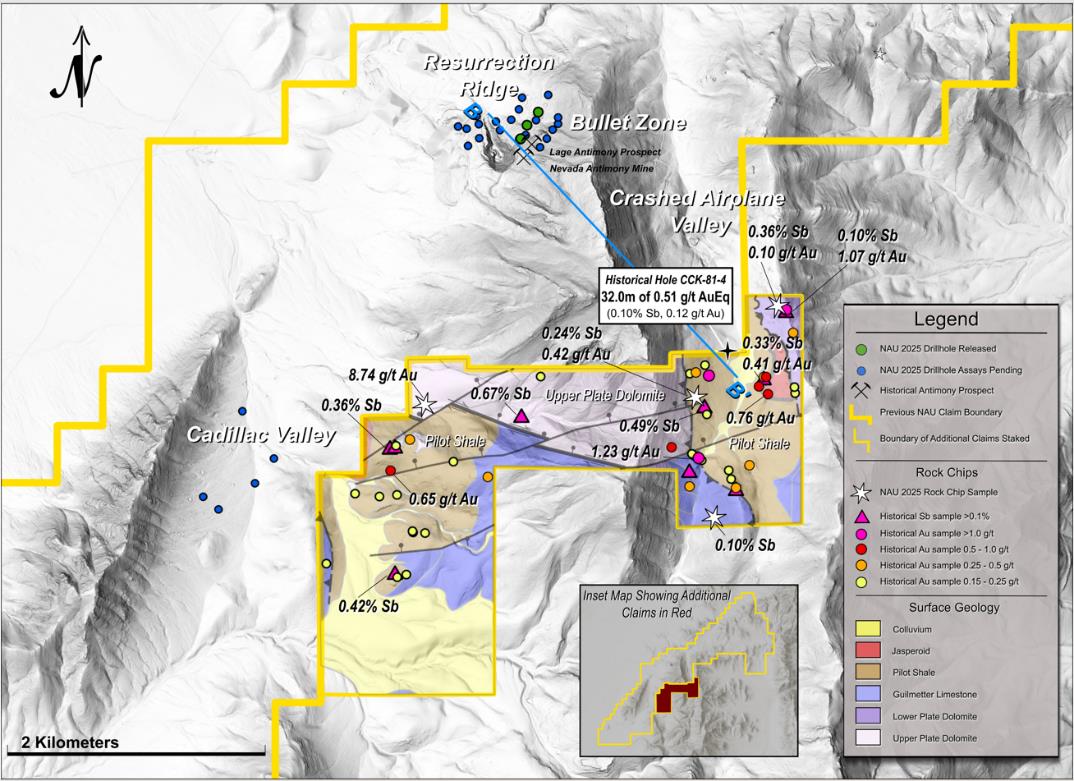
Figure 1 – Additional claims added at Limousine Butte with selected NevGold and historical sampling results. The new area encompasses remaining surface exposure of a dolomite-over-Pilot Shale thrust block, as well as exposed Pilot Shale both west and east of the dolomite thrust. This geological setting is where the key antimony-gold targets are situated at the Project. To view image please click here

Figure 2 – Large cross section at the Project outlining the strong expansion potential between Resurrection Ridge and Crashed Airplane Valley, which spans +2.5 kilometers. The newly added claims add another +1.5 kilometers of antimony-gold expansion potential around Crashed Airplane Valley. To view image please click here
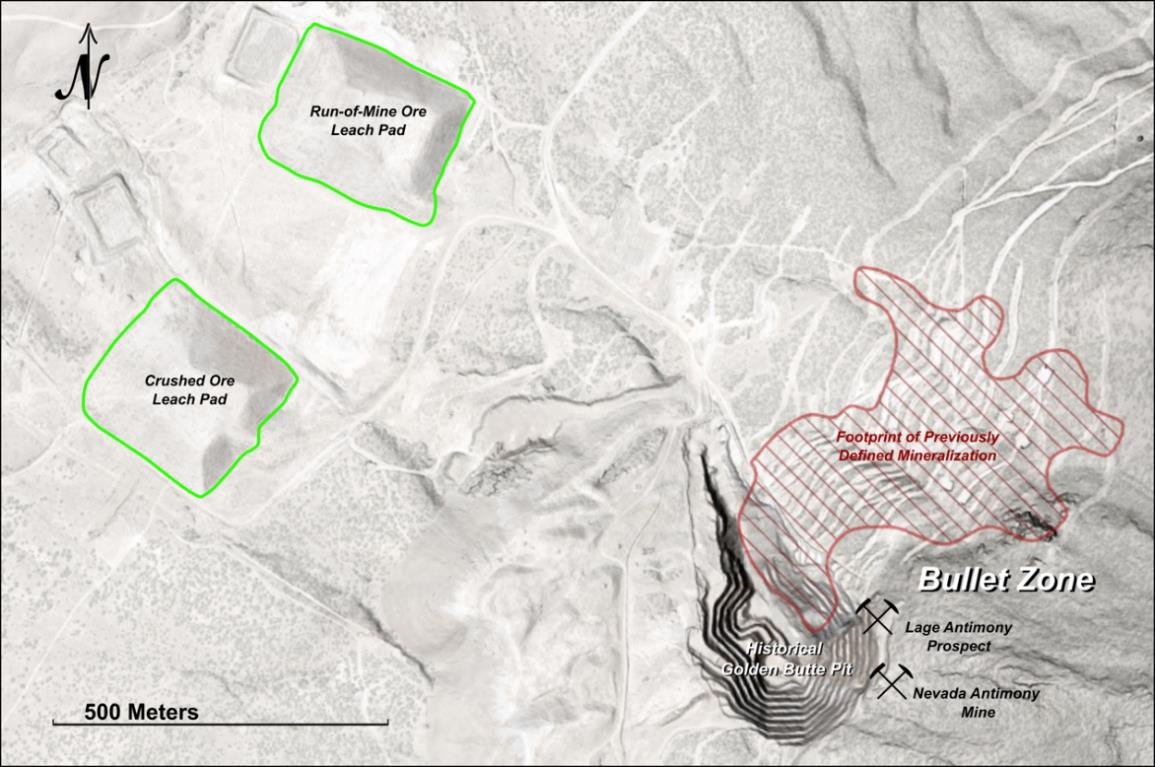
Figure 3 – Resurrection Ridge target area with the historically mined Golden Butte pit gold leach pads. The historically mined leach pads have material at surface that was previously mined and crushed with strong antimony-gold potential. The previous Golden Butte operation was solely focused on gold with no focus on antimony. Phase I sampling is completed on the leach pads. To view image please click here
US Executive Order – Announced March 20, 2025
The Company is pleased to report the sweeping Executive Order to strengthen American mineral production and reduce U.S. reliance on foreign nations for its mineral supply. Antimony (Sb) has been identified as an important ‘Critical Mineral’ in the United States essential for national security, clean energy, and technology applications, yet limited domestic mine supply currently exists.
The Executive Order invokes the use of the Defense Production Act as part of a broad United States (‘US’) Government effort to expand domestic minerals production on national security grounds. As it relates to project permitting, the Order states that it will ‘identify priority projects that can be immediately approved or for which permits can be immediately issued, and take all necessary or appropriate actions…to expedite and issue the relevant permits or approvals.’ Furthermore, the Order includes provisions to accelerate access to private and public capital for domestic projects, including the creation of a ‘dedicated mineral and mineral production fund for domestic investments’ under the Development Finance Corporation (‘DFC’).
This decisive action by the US Government highlights the urgent need to expand domestic minerals output to support supply chain security in the United States. This important Order will help revitalize domestic mineral production by improving the permitting process and providing financial support to qualifying domestic projects.
Importance of Antimony
Antimony is considered a ‘Critical Mineral’ by the United States based on the U.S. Geological Survey’s 2022 list (U.S.G.S. (2022)). ‘Critical Minerals’ are metals and non-metals essential to the economy and national security. Antimony is utilized in all manners of military applications, including the manufacturing of armor piercing bullets, night vision goggles, infrared sensors, precision optics, laser sighting, explosive formulations, hardened lead for bullets and shrapnel, ammunition primers, tracer ammunition, nuclear weapons and production, tritium production, flares, military clothing, and communication equipment. Other uses include technology (semi-conductors, circuit boards, electric switches, fluorescent lighting, high quality clear glass and lithium-ion batteries) and clean-energy storage.
Globally, approximately 90% of the world’s current antimony supply is produced by China, Russia, and Tajikistan. Beginning on September 15, 2024, China, which is responsible for nearly half of all global mined antimony output and dominates global refinement and processing, announced that it will restrict antimony exports. In December-2024, China explicitly restricted antimony exports to the United States citing its dual military and civilian uses, which further exacerbated global supply chain concerns. (Lv, A. and Munroe, T. (2024)) The U.S. Department of Defense (‘DOD’) has designated antimony as a ‘Critical Mineral’ due to its importance in national security, and governments are now prioritizing domestic production to mitigate supply chain disruptions. Projects exploring antimony sources in North America play a key role in addressing these challenges.
Perpetua Resources Corp. (‘Perpetua’, NASDAQ:PPTA, TSX:PPTA) has the most advanced domestic gold-antimony project in the United States. Perpetua’s project, known as Stibnite, is located in Idaho approximately 130 km northeast of NevGold’s Nutmeg Mountain and Zeus projects. Positive advancements at Stibnite including technical development and permitting has led to US$75 million in Department of Defense (‘DOD’) awards, over $1.8 billion in indicative financing from the Export Import Bank of the United States (‘US EXIM’) (see Perpetua Resources News Release from April 8, 2024) (Perpetua Resources. (2025)), and recent strategic investments of US$180 million from Agnico-Eagle Mines Limited (‘Agnico’) and US$75 million from JPMorganChase’s $1.5 trillion Security and Resiliency Initiative. (see Perpetua Resources News Release from October 27, 2025)
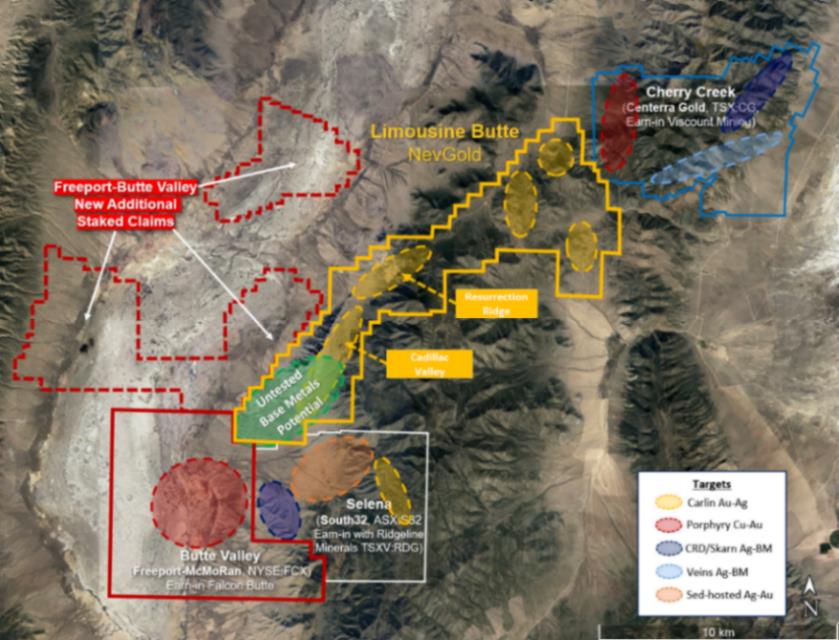
Figure 4 – Limousine Butte Land Holdings and District Exploration Activity To view image please click here
Grant of Options
The Company also announces that it has granted an aggregate of 2,350,000 stock options of the Company (each, a ‘Stock Option‘) to certain directors, officers and consultants of the Company. Each Stock Option entitles the holder to acquire one common share of the Company at an exercise price of $0.78 per share at varying expiry dates between December 17, 2027 and December 17, 2030. The Stock Options were issued pursuant to the terms of the Company’s stock option plan.
ON BEHALF OF THE BOARD
‘Signed’
Brandon Bonifacio, President & CEO
For further information, please contact Brandon Bonifacio at bbonifacio@nev-gold.com, call 604-337-4997, or visit our website at www.nev-gold.com.
Sampling Methodology, Quality Control and Quality Assurance
NevGold QA/QC protocols are followed on the Project and include insertion of duplicate, blank and standard samples in all drill holes. A 30g gold fire assay and multi-elemental analysis ICP-OES method was completed by ISO 17025 certified American Assay Labs, Reno.
The historic data collection chain of custody procedures and analytical results by previous operators appear adequate and were completed to industry standard practices. For the Newmont and US Gold data a 30g gold fire assay and multi-elemental analysis ICP-OES method MS-41 was completed by ISO 17025 certified ALS Chemex, Reno or Elko Nevada.
Technical information contained in this news release has been reviewed and approved by Greg French, CPG, the Company’s Vice President, Exploration, who is NevGold’s Qualified Person (‘QP’) under National Instrument 43-101 and responsible for technical matters of this release.
About the Company
NevGold is an exploration and development company targeting large-scale mineral systems in the proven districts of Nevada and Idaho. NevGold owns a 100% interest in the Limousine Butte and Cedar Wash gold projects in Nevada, and the Nutmeg Mountain gold project and Zeus copper project in Idaho.
Neither the TSX Venture Exchange nor its Regulation Services Provider (as that term is defined in the policies of the TSX Venture Exchange) accepts responsibility for the adequacy or accuracy of this release.
Cautionary Note Regarding Forward Looking Statements
This news release contains forward-looking statements that are based on the Company’s current expectations and estimates. Forward-looking statements are frequently characterized by words such as ‘plan’, ‘expect’, ‘project’, ‘intend’, ‘believe’, ‘anticipate’, ‘estimate’, ‘suggest’, ‘indicate’ and other similar words or statements that certain events or conditions ‘may’ or ‘will’ occur. Forward-looking statements include, but are not limited to, the proposed work programs at the Company projects, the exploration potential at Limousine Butte, and future potential project milestones such as the potential Mineral Resource Estimate (‘MRE’) at Limousine Butte. Such forward-looking statements involve known and unknown risks, uncertainties and other factors that could cause actual events or results to differ materially from estimated or anticipated events or results implied or expressed in such forward-looking statements. Such risks include, but are not limited to, general economic, market and business conditions, and the ability to obtain all necessary regulatory approvals. There is some risk that the forward-looking statements will not prove to be accurate, that the management’s assumptions may not be correct or that actual results may differ materially from such forward-looking statements. Accordingly, readers should not place undue reliance on the forward-looking statements. Any forward-looking statement speaks only as of the date on which it is made and, except as may be required by applicable securities laws, the Company disclaims any intent or obligation to update any forward-looking statement, whether as a result of new information, future events or results or otherwise. Forward-looking statements are not guarantees of future performance and accordingly undue reliance should not be put on such statements due to the inherent uncertainty therein.
References
Blackmon, D. (2021) Antimony: The Most Important Mineral You Never Heard Of. Article Prepared by Forbes.
Kurtenbach, E. (2024) China Bans Exports to US of Gallium, Germanium, Antimony in response to Chip Sanctions. Article Prepared by AP News.
Lv, A. and Munroe, T. (2024) China Bans Export of Critical Minerals to US as Trade Tensions Escalate. Article Prepared by Reuters.
Lv, A. and Jackson, L. (2025) China’s Curbs on Exports of Strategic Minerals. Article Prepared by Reuters.
Perpetua Resources. (2025) Antimony Summary. Articles and Videos Prepared by Perpetua Resources.
Sangine, E. (2022) U.S. Geological Survey, Mineral Commodity Summaries, January 2023. Antimony Summary Report prepared by U.S.G.S
U.S.G.S. (2022) U.S. Geological Survey Releases 2022 List of Critical Minerals. Reported Prepared by U.S.G.S
Wilson, D.,J., Christiansen, E., H., and Tingey, D., G., 1994, Geology and Geochemistry of the Golden Butte Mine- A Small Carlin- Type Gold Deposit in Eastern Nevada: Brigham Young University Geology Studies, v.40, P.185-211. BYU V.40 P.185-211.





